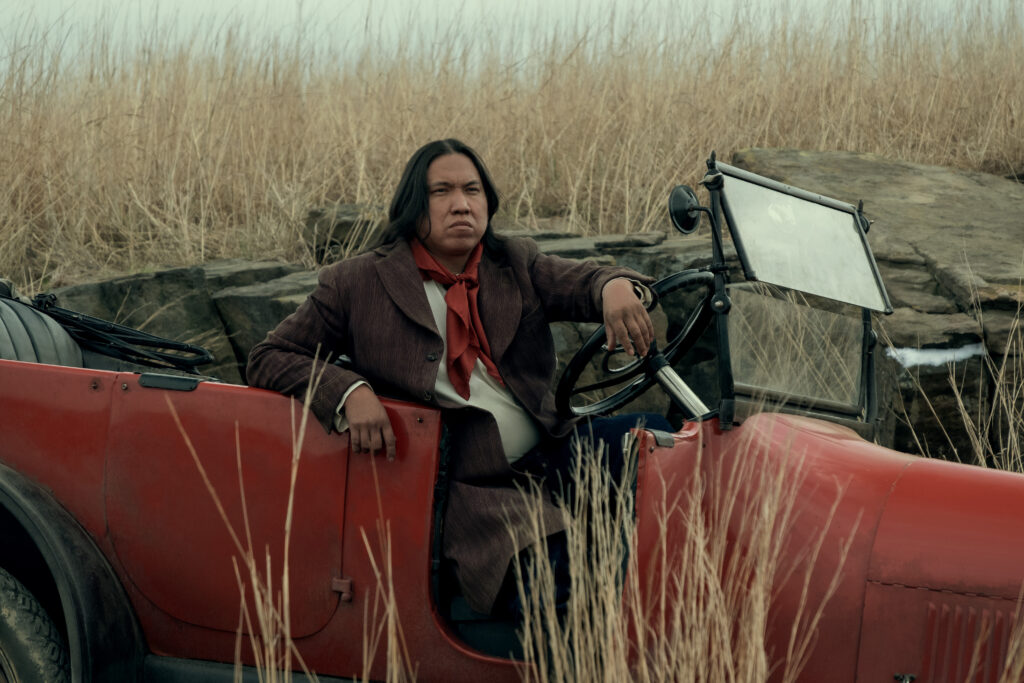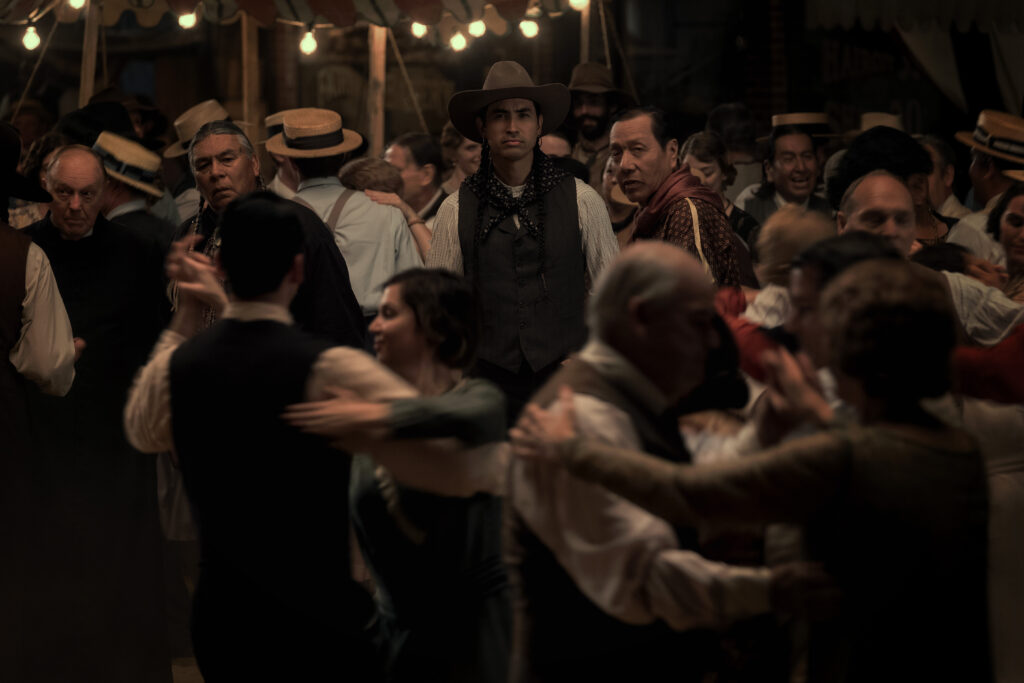
Tragedy struck the Osage Nation in the 1920s. People became greedy. They wanted the tribe’s riches.
The book “Killers of the Flower Moon” tells this true story. A white man married an Osage woman. He did it for money. He helped murder her family for oil profits.
The movie shows the relationship between Mollie Kyle and Ernest Burkhart. Mollie is Osage. Ernest marries her on his uncle’s orders. Uncle William Hale is wealthy but wants more. He schemes with Ernest to kill Osage for their oil rights.
The book explores the “Reign of Terror” against the Osage Nation. It follows investigators solving these brutal crimes. In the film, Texas Ranger Tom White leads this team.
Director Martin Scorsese adapted the book for the screen. He shifted focus from the investigation to the Osage perspective. The story centers on their suffering and resilience.
The movie follows the story of Mollie and Ernest’s marriage as the central focus.
Killers Of The Flower Moon | Official Trailer | Paramount0 seconds of 2 minutes, 21 secondsVolume 0%

Martin Scorsese aimed to capture the insidious nature of the betrayal and injustice faced by the Osage people. The deep-rooted betrayal formed the core narrative.
Here’s how closely Scorsese’s film depicts the true events behind the Osage murders.
Read more: Martin Scorsese Still Has Stories to Tell
The headright system
In 1906, after settling on their reservation, the Osage Nation negotiated with the U.S. government. Full-blood Osage members received land allotments with mineral rights. Surface land could be sold, but mineral headrights passed to legal heirs. These headrights entitled owners to quarterly payments from underground resources.
Lily Gladstone plays Mollie, an Osage woman. JaNae Collins is her sister. Cara Myers and Jillian Dion portray other Osage women.
Years ago, oil was found on the Osage reservation. This made the Osage wealthy. But there was a catch. The government didn’t let the Osage spend money freely.
White men acted as “guardians” for Osage deemed “incompetent.” These guardians often stole or withheld the Osage’s money. Mollie had to ask her guardian for her own funds.
Mollie and Ernest’s Marriage
Ernest, a taxi driver, met and married Mollie in 1917. They had three kids: Elizabeth, James “Cowboy,” and Anna. While on trial, Ernest’s daughter Anna died from whooping cough at age 4.
The film shows Ernest conspiring to kill Mollie’s family, despite their loving marriage. Director Scorsese says their real granddaughter convinced him to make their relationship central.
Leonardo DiCaprio portrays Ernest, while Lily Gladstone plays his wife Mollie.
The love story between Ernest and Mollie is debated. Ernest may have conspired to murder Mollie’s family. The gritty script portrays their relationship differently.
Some involved hoped the film would focus on Mollie’s family’s perspective. An Osage consultant said it’s hard for non-Osages to capture that view accurately.
More: The shocking ending of Killers of the Flower Moon.
“When someone plots to kill your whole family, that’s not love, it’s abuse,” the consultant said. He felt the movie gave Ernest a conscience and depicted love.
Killers Of The Flower Moon Reign of Terror
The Reign of Terror began in 1921 with Mollie’s sister Anna and Charles Whitehorn found shot dead. Over 4 years, at least 24 Osage people and allies died violently or suspiciously. This included Mollie’s mom Lizzie, sisters Minnie and Rita, brother-in-law Bill, and cousin Henry.
https://time.com/6325586/killers-of-the-flower-moon-true-story/
Ernest slowly gave Mollie, who had diabetes, injections that weren’t insulin. This made Mollie weak and bedridden during the Reign of Terror years. It was an attempt on her life, but she survived.
The FBI investigation and trial
When Rita, Bill Smith, and Nettie Brookshire died in a 1923 explosion, the Osage Tribal Council asked the government for help. The newly-formed Bureau of Investigation (later the FBI) assigned White. It became their first murder case. White led agents, some undercover, to find evidence: Hale orchestrated over 20 Osage murders to profit.
Hale’s accomplices included Ernest, Bryan, and local criminals. After Hale and Ernest’s 1926 arrests for Rita, Bill, and Nellie’s murders, Ernest confessed. He named Hale the mastermind and identified John Ramsey as Henry Roan’s killer. In April, bootleggers Kelsie Morrison and Bryan Burkhart were charged with Anna’s murder.
Robert De Niro and Jesse Plemons star in Killers of the Flower Moon on Apple TV+.
The legal process was lengthy and difficult. Ernest agreed to testify against the Smiths’ murderers. But he was intimidated and changed sides. He then pleaded guilty and testified for the prosecution.
In the end, Ernest, Hale, Ramsey, and Morrison received life sentences. Ernest was convicted for Rita, Bill, and Nellie’s murders. Hale and Ramsey were guilty of Henry Roan’s murder. Morrison was responsible for Anna’s death. However, Ernest, Hale, and Ramsey were eventually paroled. In 1966, Ernest received a full pardon from Oklahoma’s governor.
Mollie stood by her husband until his confession in 1926. She then divorced Ernest and remarried John Cobb. Mollie passed away at 50 in 1937.
Also Read – What was the cause of Iran helicopter crash
Systemic violence
While Hale masterminded the 24 murders during the Reign of Terror, the book explores a broader conspiracy. Grann’s research shows numerous Osage died mysteriously before Anna’s death and after Hale’s imprisonment. Their deaths were never investigated properly.
“I thought I was writing about an evil figure caught by the FBI,” Grann said. “But I realized it was part of a larger genocidal campaign against the Osage.”
RehumanizeThe Smithsonian Magazine article focused on a culture of violence. It was not about finding culprits. Instead, it revealed a system where many sought profits. They married Osage people to inherit oil wealth. Then, they killed their spouses for money. This exposed a corrupt system targeting the Osage. The article highlighted complicity in these murders for financial gain.